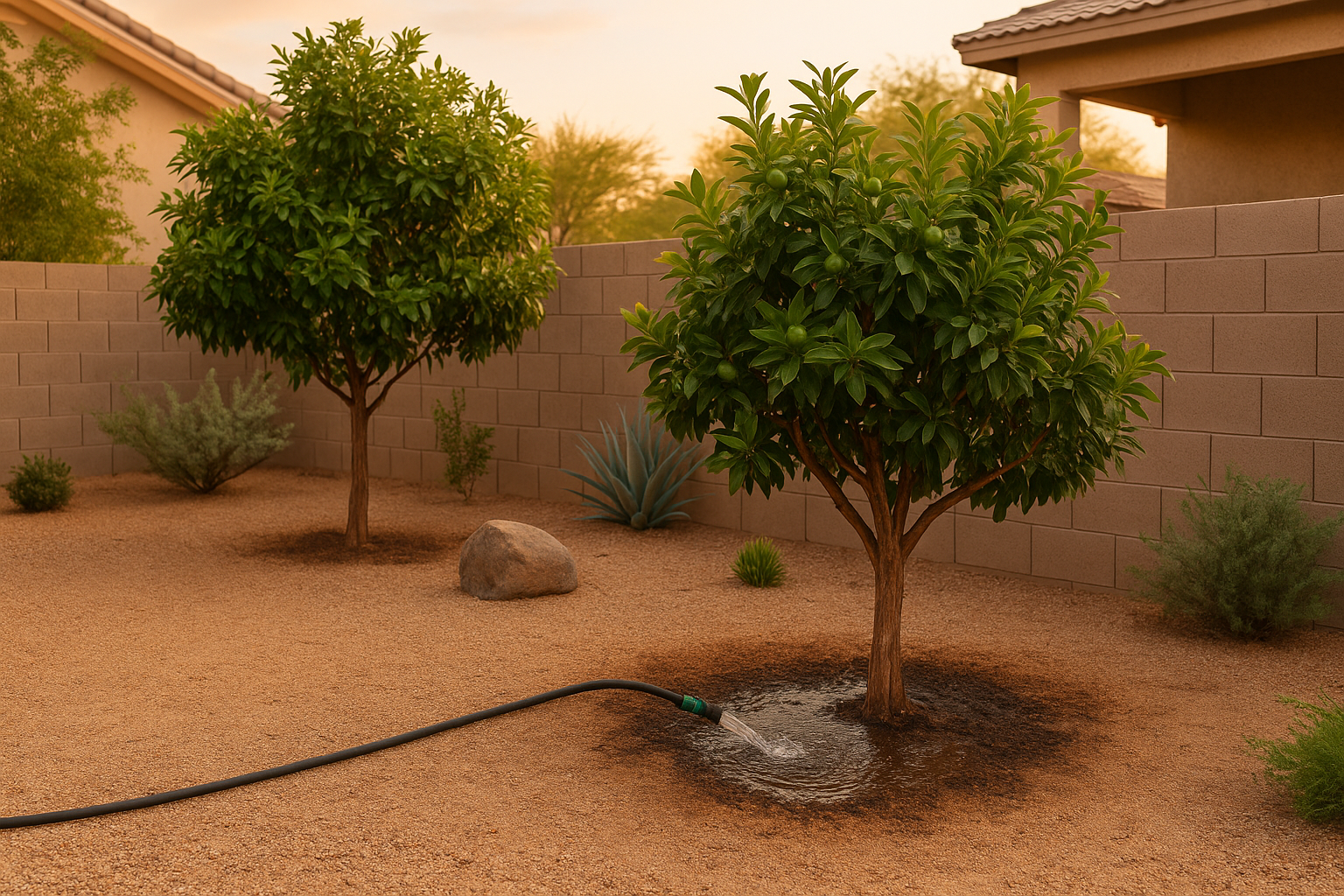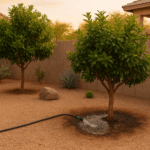Living in Gilbert, Arizona, we are blessed with the opportunity to grow lush citrus trees right in our own yards. However, as the summer heat intensifies in mid-May, many homeowners find their beloved citrus plants struggling to survive. But don’t worry, it’s not all doom and gloom. With the right watering strategies, you can help your citrus trees thrive even during the harsh Arizona summer.
Understanding Citrus Tree Watering Needs
Citrus trees are hardy and can handle the arid Arizona climate, but they do have specific watering needs, especially during the hot summer months. One of the biggest mistakes homeowners make is over-watering their citrus trees. While it may seem counterintuitive, too much water can be just as harmful as not enough. Over-watering can lead to root rot, a deadly disease that is difficult to reverse once it takes hold.
On the other hand, under-watering can lead to dry, brittle branches and fruit that is small and sour. The key is to strike the right balance. According to local horticulture expert Dr. Linda Chalker-Scott, “The most effective way to water citrus trees is to provide deep, infrequent watering. This encourages the roots to grow deep, where they can access moisture even during dry spells.”
How to Water Citrus Trees in Mid-May
As the temperatures rise in mid-May, you’ll need to adjust your watering schedule to keep your citrus trees healthy. Start by watering deeply and thoroughly once a week. This means allowing the water to penetrate at least two feet into the ground. You can check the depth by using a soil probe or a long screwdriver. If it goes in easily, the soil is moist enough; if not, you need to water more.
Remember to water the entire root zone, which extends about as wide as the tree’s canopy. Most of the water-absorbing roots are located in the top two feet of soil and extend beyond the drip line, so be sure to water this entire area. The Smart Irrigation Upgrades Every Gilbert Yard Needs article provides more insight on how to efficiently water your trees.
Protecting Your Citrus Trees from Heat Stress

Watering alone isn’t enough to protect your citrus trees from the intense Arizona sun. Heat stress can cause leaf drop, fruit drop, and sunburned fruit. To prevent this, mulch around the base of the tree with wood chips or compost. This helps to keep the soil cool and retain moisture. However, be sure not to mound the mulch against the trunk as this can lead to rot.
Another effective way to protect your citrus trees is to use shade cloth. This can be especially beneficial for young or newly planted trees that haven’t yet developed a thick canopy to shield the fruit. The cloth should be suspended above the tree, not wrapped around it, to allow for air circulation.
Addressing Common Citrus Watering Problems
If you’ve been following these watering strategies but your citrus trees are still struggling, it’s time to troubleshoot. Yellowing leaves can be a sign of over-watering, while wilting leaves may indicate under-watering. If the leaves are curling and the fruit is dropping prematurely, your tree may be suffering from heat stress.
In such cases, it’s important to reassess your watering strategy and make necessary adjustments. You may need to water more deeply or frequently, or you may need to provide additional shade. Don’t hesitate to seek professional advice if you’re unsure what to do. As Dr. Chalker-Scott advises, “When in doubt, it’s always better to err on the side of under-watering. Citrus trees are remarkably resilient and can bounce back from a period of dryness much easier than from a spell of waterlogging.”
Final Thoughts
While mid-May can be a challenging time for citrus trees in Gilbert, it’s not an insurmountable hurdle. With the right watering strategies and a bit of extra care, your citrus trees can thrive and continue to provide you with bountiful harvests. Remember, the key is to understand the specific needs of your citrus trees and to adjust your watering practices accordingly.
By following these guidelines, you’ll not only save your struggling citrus trees but also conserve water, a precious resource in our arid Arizona climate. So don’t let the mid-May heat intimidate you. Arm yourself with knowledge and take action. Your citrus trees—and your future harvests—will thank you.






